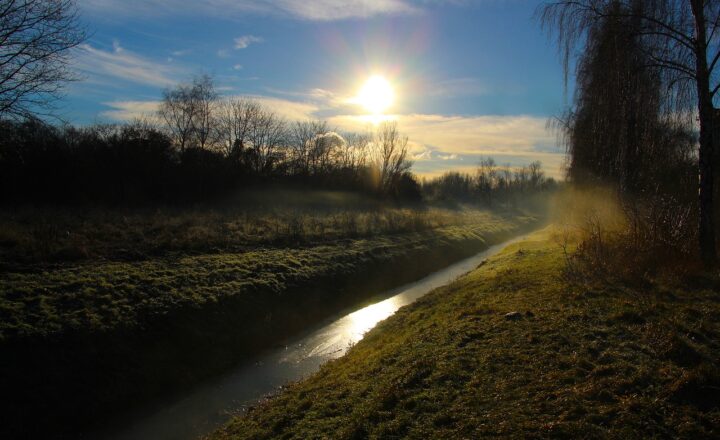The Social Lives of Whales: How They Form Family Bonds in Ocean Ecosystems
November 15, 2024

Whales are among the largest and most intelligent creatures on Earth, and their social structures are as complex as any mammal. Their family bonds, developed in the vast expanses of the ocean, can rival those of terrestrial mammals. Understanding these majestic creatures offers us insight into the intricate ecosystems they inhabit, the familial ties they form, and how their social behaviors influence their survival.
1. The Family Structures of Whales
Whale families, often referred to as pods, are communal units that can vary in size from just a few individuals to over fifty. These pods typically consist of mothers, their offspring, and other related adults—often grandmothers and aunts—who play crucial roles in nurturing and protecting the young.
Scientists observe that certain species, such as killer whales (orcas), exhibit matrilineal societies, where family structure is led by females. These female-led pods are vital for teaching younger whales essential skills for hunting and survival.
*Key Characteristics of Whale Family Structures:*
*
-
*
- **Matrilineal Ties:** Females often remain with their maternal groups for life, whereas males may leave to join other pods, often for breeding purposes.
- **Cooperative Care:** In many species, all members of the pod participate in the care of young, enhancing survival rates.
- **Social Learning:** Younger whales learn vital life skills through observation and imitation, particularly in hunting techniques and social interactions.
*
*
*
The intricate social dynamics within these pods highlight the importance of social structures for whale species, which contribute to their survival.
2. Communication: The Language of Whales
Whales are renowned for their sophisticated communication abilities. They utilize a variety of vocalizations, from clicks and whistles to songs, to convey messages, maintain social bonds, and coordinate group activities. For instance, humpback whales are famous for their lengthy and complex songs, which can be heard over vast distances, possibly serving to attract mates or demarcate territories.
*Methods of Communication:*
*
-
*
- **Echolocation:** Used primarily by toothed whales like sperm whales, echolocation allows these mammals to navigate and hunt in deep waters by emitting sound waves and interpreting the returning echoes.
- **Social Calls:** Many species use specific calls to maintain contact within their pods, especially during long migrations when members may become separated.
- **Songs:** The elaborate songs of humpback whales can last for up to 20 minutes, hinting at advanced cognitive capabilities and social structures.
*
*
*
Through these vocalizations, whales demonstrate not only the ability to communicate but also to create and maintain social relationships, critical for their survival in the ocean.
3. Social Behavior and Play among Whales
Play is a significant part of social behavior in many whale species. Often referred to as a sign of intelligence, playful interactions reinforce social bonds and contribute to mental and physical development. Activities such as breaching, tail slapping, and even surfing the waves created by boats serve as fun and engaging experiences for whales.
*Benefits of Play:*
*
-
*
- **Strengthening Bonds:** Playful interactions help strengthen the bonds within the pod, facilitating better teamwork and cooperation during hunting or migration.
- **Stress Relief:** Engaging in playful behavior may also serve as a way for whales to alleviate stress and anxiety, especially during long migrations.
- **Teaching Opportunities:** Young whales often learn from observing their elders during playful interactions, providing a valuable context for social learning.
*
*
*
This playful aspect of whale behavior highlights their intelligent nature and the complexity of their social interactions.
4. The Impact of Environmental Changes on Whale Social Structures
Climate change and human activities pose significant threats to whale populations and their social structures. Increasing ocean temperatures, pollution, and decreasing prey availability can severely impact whales’ ability to form stable family units. For instance, noise pollution from ships and industrial activities disrupts their communication, leading to difficulties in locating pod members and coordinating social interactions.
*Consequences of Environmental Changes:*
*
-
*
- **Disrupted Communication:** Increased background noise can hinder vocal communication, which is essential for maintaining social structures.
- **Decreased Prey Availability:** Overfishing and environmental changes can lead to fewer food sources, influencing the health and survival of entire pods.
- **Loss of Habitat:** Coastal development and shipping lanes can disrupt migratory patterns, forcing pods to adapt to new, potentially hostile environments.
*
*
*
Efforts to mitigate these threats through conservation and policy initiatives are crucial to maintaining the delicate social structures of whale populations around the world.
5. Conclusion: The Importance of Protecting Whale Social Structures
As we continue to learn more about these magnificent marine mammals, it becomes clear that their social lives are intricately linked to their survival. Understanding the dynamics of whale families not only enriches our knowledge of their behaviors but also emphasizes the necessity of protecting their environments. By conserving whale populations and the ecosystems they inhabit, we can ensure the continuation of their complex social structures, contributing to a healthier ocean ecosystem.
If we want to ensure the survival of these awe-inspiring creatures, it’s essential that we prioritize conservation efforts aimed at protecting their habitats, understanding their social dynamics, and mitigating the impact of human activities on their lives. Together, we can preserve the social lives of whales and the intricate ecosystems they rely on—and by extension, the health of our planet.







